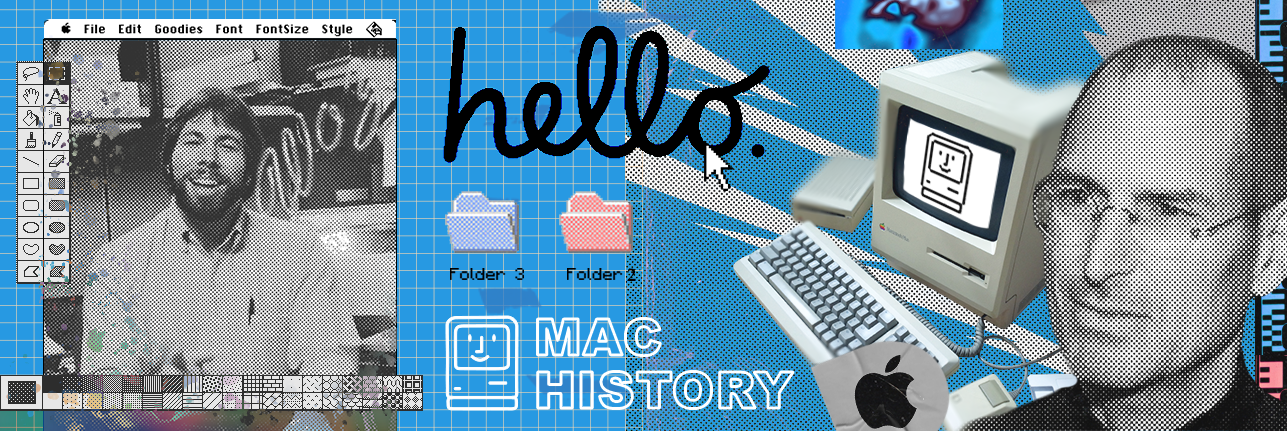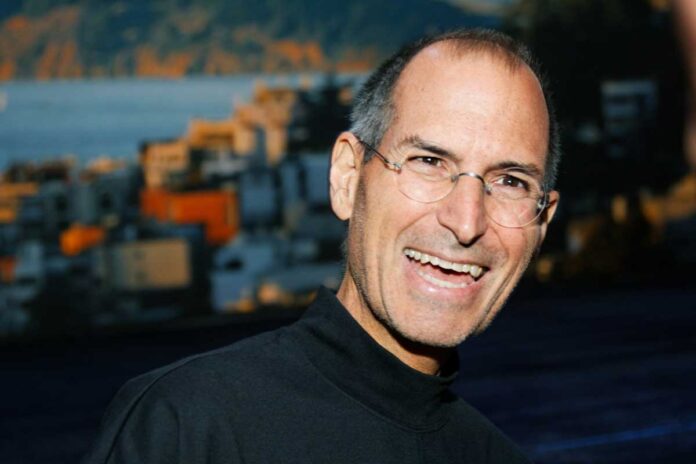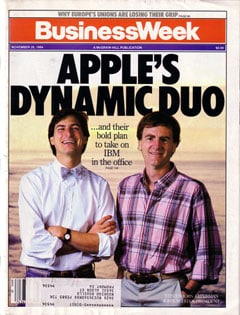“Do you want to sell sugared water for the rest of your life or do you want to come with me and change the world?” With this famous sentence, Steve Jobs convinced the Pepsi manager John Sculley in 1983 to enter the computer industry and move to California. But the “Dynamic Duo” did not last long. It quickly became obvious that the Apple co-founder Jobs and the new manager Sculley did not come to an agreement in key issues such as the marketing strategy for the Macintosh. It began in the time before Apple went public: In 1979, Markkula and Scott had hired the talented engineer Jef Raskin to construct a “people’s computer.”
The new model should reduce the company’s dependence on mega-seller Apple II. However, the project progressed very slowly, partly because Steve Wozniak did not play an active role in its development anymore. After a plane crash with his Beechcraft Bonanza in February 1981, Woz had largely withdrawn from Apple. Therefore, it was Steve Jobs who at this stage provided strategic directions in Apple’s technology. He was neither an inventor nor an engineer or programmer. But Jobs was able to estimate the implications of new technology concepts much better than anyone else.
The Enlightenment in Xerox PARC
Steve Jobs’ masterpiece in technology scouting took off during the event of Xerox PARC. As early as 1979 he had visited with a small team of Apple developers the legendary California research center in nearby Palo Alto. He had the chance to look into the future. “They showed me really three things,” Jobs said in 1995 in a TV interview. “But I was so blinded by the first one I didn’t even really see the other two. One of the things they showed me was object orienting programming they showed me that but I didn’t even see that. The other one they showed me was a networked computer system…they had over a hundred Alto computers all networked using email etc., etc., I didn’t even see that. I was so blinded by the first thing they showed me which was the graphical user interface. I thought it was the best thing I’d ever seen in my life, ” Jobs said in a TV interview in 1995.
At Xerox PARC Steve Jobs had seen the light. Now, he also wanted to build an Apple computer that was easy to operate. Apple had bought admission to the Xerox Research Center PARC through a stock deal that appeared to be very lucrative to the narrow-minded Xerox managers on the East Coast. Xerox was allowed to buy 100,000 shares of the Apple start-up company stock before the public offering for a million dollars. In the short term, this deal was worth it: By the time Apple went public a year later, Xerox’s $1 million worth of shares were already worth $17.6 million. But in the long term, Xerox lost the chance to become an industry giant like Microsoft or IBM because the work of their researchers in California had been ignored internally.
Read next page: Pirates of the Macintosh
Pirates of Macintosh




[…] The Legend of Steve Jobs – His Life and Career » Mac History. Steve Wozniak and Steve Jobs […]
[…] time Apple has used an iconic design for an iOS app. The original iOS calculator used a design that paid homage to the classic Braun ET44 calculator. Apple SVP of Industrial Design Jonathan Ive is well-known as […]
[…] time Apple has used an iconic design for an iOS app. The original iOS calculator used a design that paid homage to the classic Braun ET44 calculator. Apple SVP of Industrial Design Jonathan Ive is well-known as […]
[…] time Apple has used an iconic design for an iOS app. The original iOS calculator used a design that paid homage to the classic Braun ET44 calculator. Apple SVP of Industrial Design Jonathan Ive is well-known as […]
[…] of German designer Dieter Rams defender simplicity and functionalism to inspire Steve Jobs and his Apple universe, in addition to Banzi, which would connect his brain chips from the first approach to […]
[…] Dieter Rams, defensor p la simplicidad junto con el funcionalismo que inspiraría a Jobs y a su universo Apple, además p a Banzi, que conectaría los chips p su cerebro a partir p ose primer acercamiento a la […]
[…] was the graphical user interface. I thought it was the best thing I’d ever seen in my life” (Steve Jobs 1995) Inspired by this amazing experience in 1983 Steve Jobs brought out “The Apple […]
[…] influenced the designers at Apple. See here and here. I’m not about to have a rant about the brazen similarities, its more to […]
[…] read about Steve Jobs and Dieter Rams. It talks about how Steve Jobs was highly influenced by the many years of work and design success […]
[…] Dernbach, Christoph. “The Legend of Steve Jobs – His Life and Career.” Mac History, Mac History, 1 Feb. 2015, https://www.mac-history.net/steve-jobs/2012-10-30/the-legend-of-steve-jobs-his-life-and-career […]
[…] Dieter Rams, defensor de la simplicidad y el funcionalismo que inspiraría a Steve Jobs y a su universo Apple, además de a Banzi, que conectaría los chips de su cerebro a partir de ese primer acercamiento a […]
[…] should regard Steve Jobs as a true legend who always led by example. He has an amazing and inspiring story that should instill a sense of […]